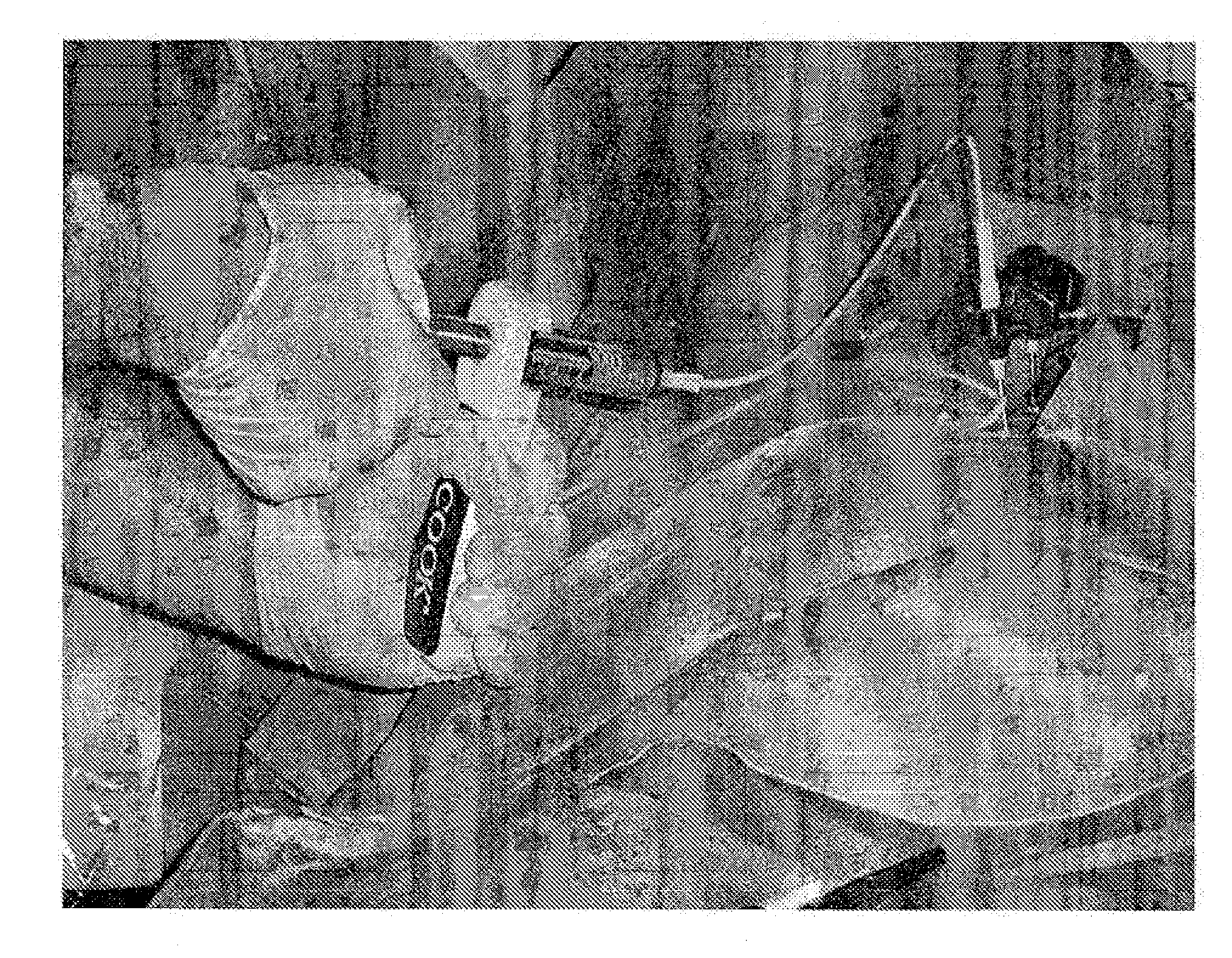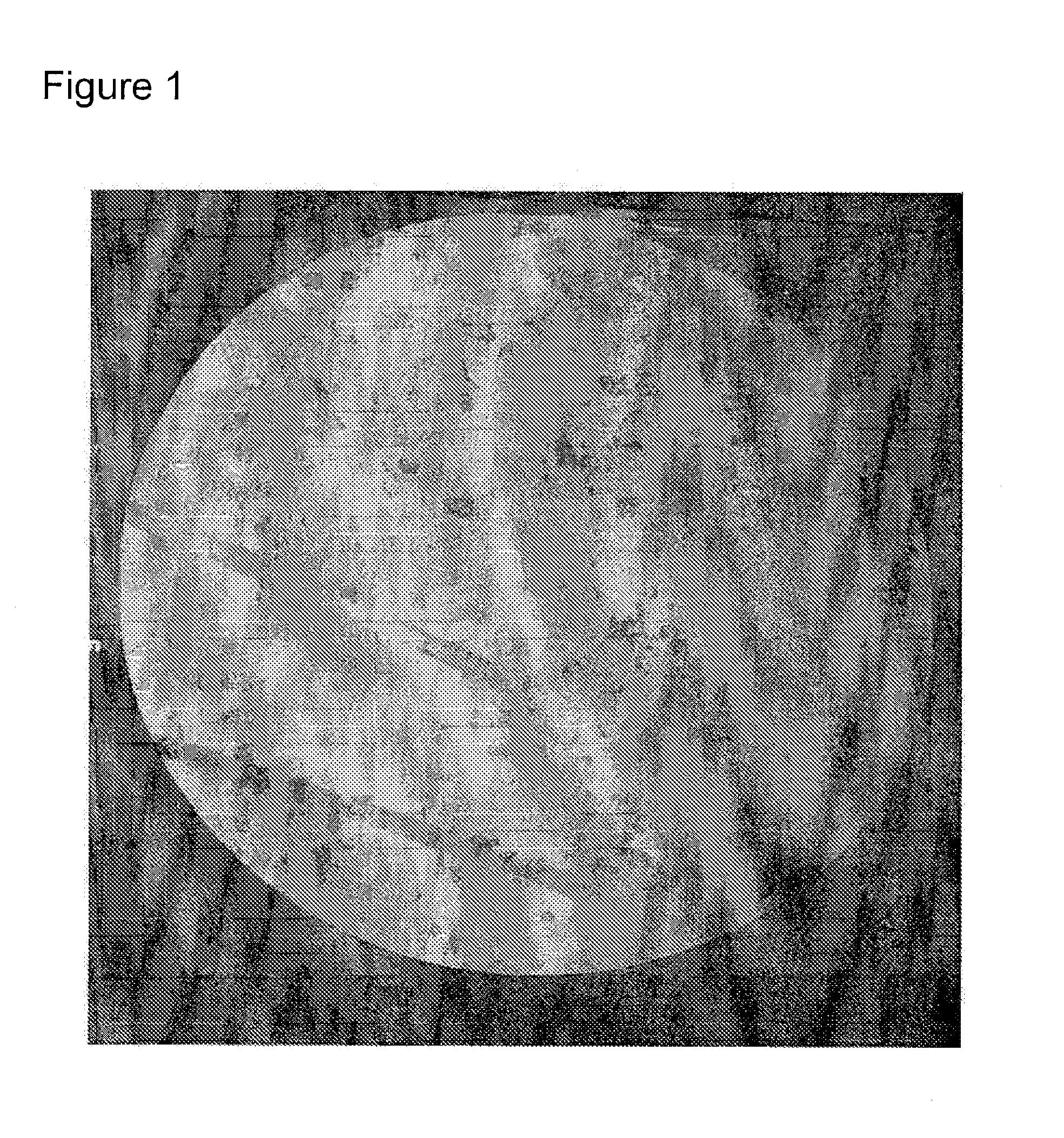Minimally invasive treatment of vertebra (MITV) using a calcium phosphate combination bone cement
a technology of bone cement and minimal invasive treatment, which is applied in the direction of depsipeptides, peptide/protein ingredients, aerosol delivery, etc., can solve the problems of increasing the risk of bone fracture, gastrointestinal disturbance, and abnormally porous bone that is more compressible, so as to improve the ability of the cap composite and maintain its cohesiveness.
- Summary
- Abstract
- Description
- Claims
- Application Information
AI Technical Summary
Benefits of technology
Problems solved by technology
Method used
Image
Examples
examples
[0088]The following examples are to illustrate the invention. They are not meant to limit the invention in any way.
example i
Preparation of Nano Crystalline Apatite (NCA) with No Crystal Growth Inhibitor
[0089]Add 100 g of Na2HPO4, 7H2O to 1000 ml of distilled water to prepare a solution of 0.37 M (Solution 1). Add 35 g of Ca(NO3)2, 4H2O to 300 ml of distilled water to prepare a solution of 0.49 M (Solution 2).
[0090]Add rapidly solution 2 to solution 1, stir vigorously for 5 minutes at room temperature to produce slurry. After filtration, washing and freeze-drying (by adding liquid nitrogen into the wet cake), NCA nano-particle is obtained. Activate NCA powder (at 120° C. during 2 hours) by removing excessive moisture (about 3 to 10%).
[0091]In this example the crystallinity index of NCA produced is estimated (by comparing with hydroxyapatite) to be around 60% with the nano-size crystal range: 30-80 nm.
example 2
Preparation of Nano Low Crystalline Apatite (NLCA) with One Crystal Growth Inhibitor (CO32− Ions)
[0092]Add 100 g of Na2HPO4, 7H2O to 1000 ml of distilled water to prepare a solution of 0.37 M. Once dissolved, add 40 g of NaHCO3 and stir to dissolve (Solution 1).
[0093]Add 35 g of Ca(NO3)2, 4H2O to 300 ml of distilled water to prepare a solution of 0.49 M (Solution 2).
[0094]Add rapidly solution 2 to solution 1, stir vigorously for 5 minutes at room temperature to produce slurry. After filtration, washing and freeze-drying (by adding liquid nitrogen into the wet cake), NLCA nano-particle is obtained. Activate NLCA powder (at 120° C. during 2 hours) by removing excessive moisture (about 3 to 10%).
[0095]In this example the crystallinity index of NLCA produced is estimated (by comparing with hydroxyapatite) to be around 50% with nano-size crystal range: 30-50
PUM
| Property | Measurement | Unit |
|---|---|---|
| Temperature | aaaaa | aaaaa |
| Fraction | aaaaa | aaaaa |
| Time | aaaaa | aaaaa |
Abstract
Description
Claims
Application Information
 Login to View More
Login to View More - R&D
- Intellectual Property
- Life Sciences
- Materials
- Tech Scout
- Unparalleled Data Quality
- Higher Quality Content
- 60% Fewer Hallucinations
Browse by: Latest US Patents, China's latest patents, Technical Efficacy Thesaurus, Application Domain, Technology Topic, Popular Technical Reports.
© 2025 PatSnap. All rights reserved.Legal|Privacy policy|Modern Slavery Act Transparency Statement|Sitemap|About US| Contact US: help@patsnap.com



